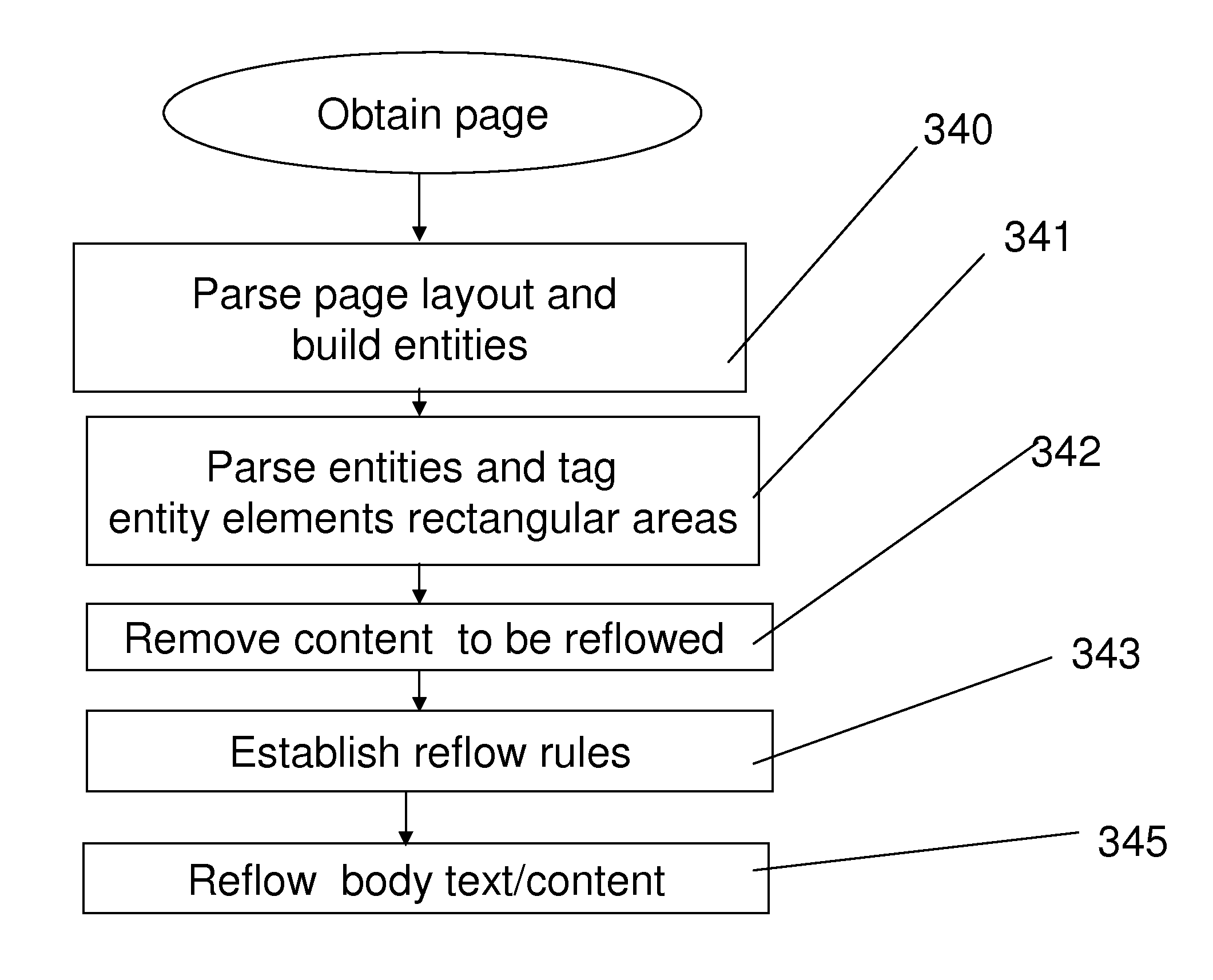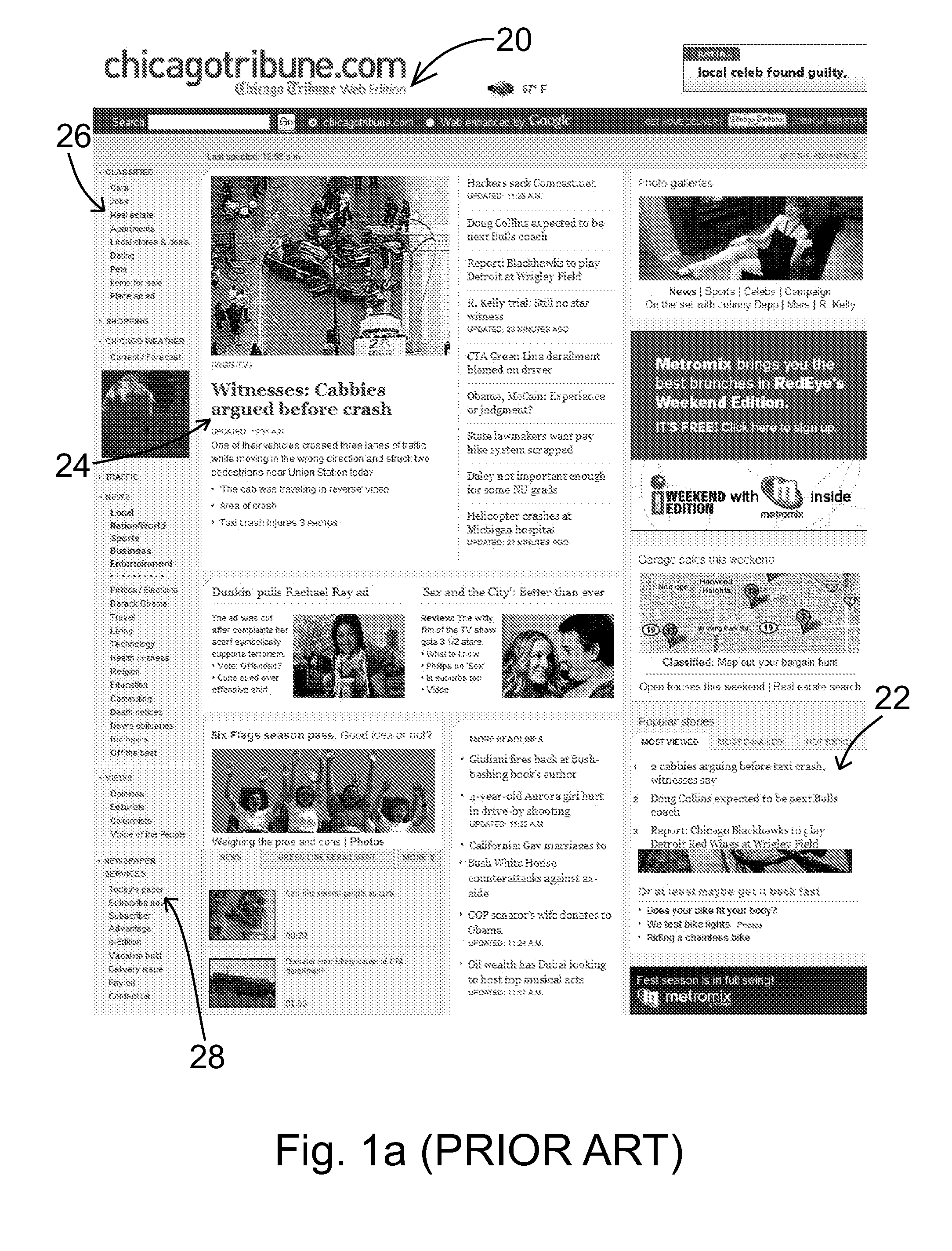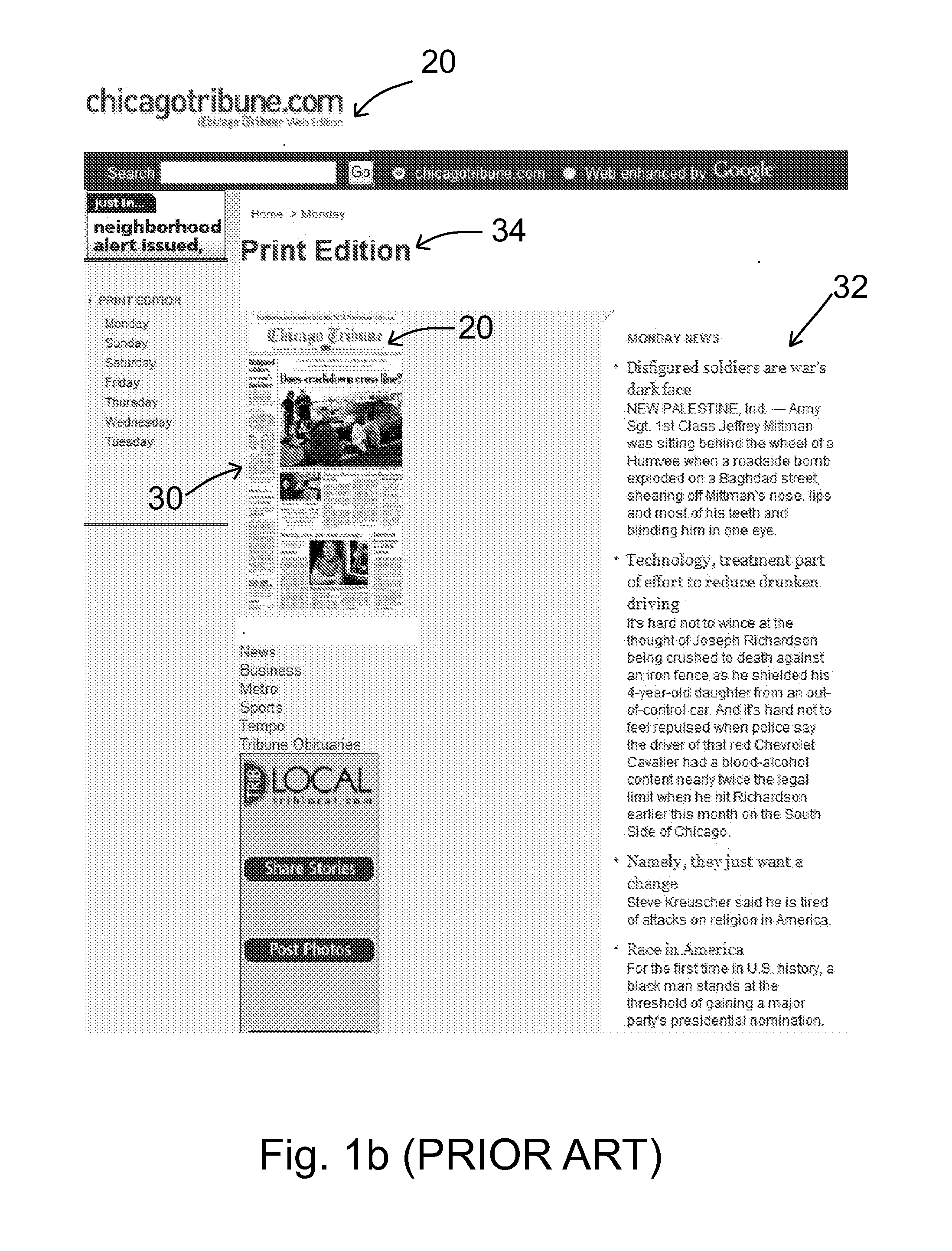System and method for providing online versions of print-medium publications
- Summary
- Abstract
- Description
- Claims
- Application Information
AI Technical Summary
Benefits of technology
Problems solved by technology
Method used
Image
Examples
Embodiment Construction
[0057]The present invention relates generally to the field of adaptation of print publications for the electronic media, for example for use on the Internet, and more particularly but not exclusively for enhancing readability of a print-medium publication when displayed as a webpage in its original print layout.
[0058]A newspaper page consists of multiple items, Banner, headlines, sub-headlines, by-lines, articles and images, all in a layout on the page which is often distinctive to the publication. In general, since a newspaper page is larger than a computer screen, retaining the original layout makes the page unreadable unless the page is zoomed, but then only part of the page is visible and reading is difficult. Thus, instead of zooming and scrolling the entire page, as in some web-page browsers or PDF files or “electronic books,” the present embodiments may provide all of the items of the page in the same location in the page layout, but with the text resized to be readable. Some...
PUM
 Login to View More
Login to View More Abstract
Description
Claims
Application Information
 Login to View More
Login to View More - R&D
- Intellectual Property
- Life Sciences
- Materials
- Tech Scout
- Unparalleled Data Quality
- Higher Quality Content
- 60% Fewer Hallucinations
Browse by: Latest US Patents, China's latest patents, Technical Efficacy Thesaurus, Application Domain, Technology Topic, Popular Technical Reports.
© 2025 PatSnap. All rights reserved.Legal|Privacy policy|Modern Slavery Act Transparency Statement|Sitemap|About US| Contact US: help@patsnap.com



